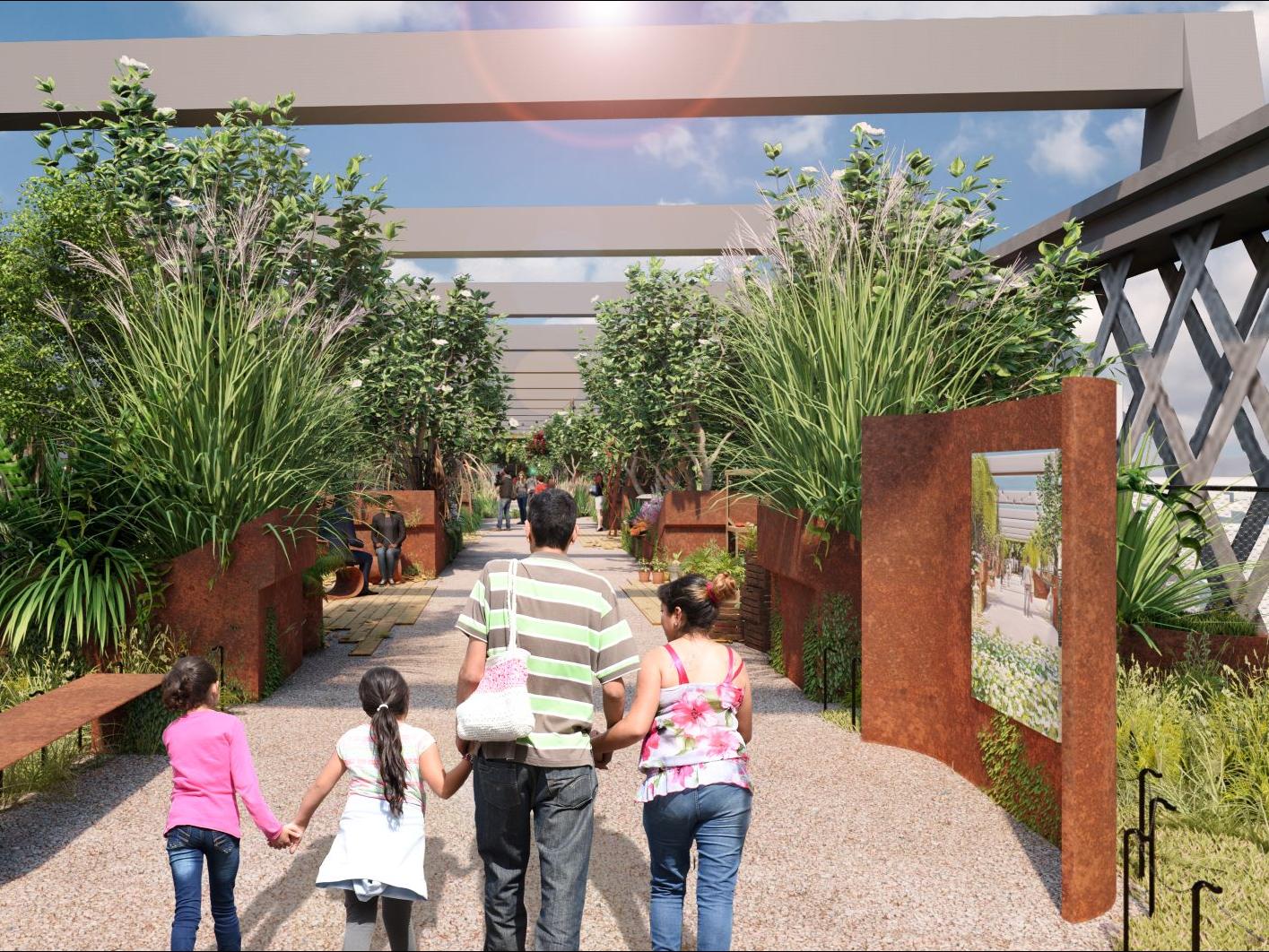A grade II-listed viaduct dating back to Victorian times is being restored and reinvented in a pilot scheme led by the National Trust and designed by Twelve Architects.

The cast iron and steel bridge once used to transport coal in and out of the city will be transformed into welcoming green space that will be accessible for all.
Supported by Manchester City Council, Greater Manchester Combined Authority and members of the local community, the National Trust will deliver the first phase of the project in summer 2022 in the form of a temporary park and pilot installation designed by Twelve Architects. Throughout the summer, members of the public will be able to visit the park, whilst giving their feedback about the plans. Gaining feedback from the community is a key step in shaping the vision for the second phase of the project: the permanent regeneration of the viaduct.
The viaduct has stood unused since 1969 when Manchester Central station was closed, with only essential repairs and maintenance carried out since, leaving the bridge exposed to the elements and covered in shrubs.
The pilot concept conceived by Twelve Architects, seeks to marry the city’s proud industrial heritage with a modern urban park concept, more reflective of the Manchester of today. The principal architectural challenge is to achieve the transition from hard grey metal into a soft green oasis, a place people can relax and unwind in nature while immersed in the viaduct’s history.
Twelve Architects has worked closely with the landscape team at the National Trust to devise three unique zones, which take visitors on a journey of discovery from the viaduct that ‘is’ to the viaduct that ‘could be’.
Visitors will enter the viaduct through a welcome area, which will contain a welcome kiosk, a food truck and café seating, compost toilets and seating for those waiting to begin their pre-booked tours. A green screen gate, a ‘living wall’, will obstruct their view of the next phase of their journey.
At a timed interval, the green screen gate will open to reveal the next stretch of the viaduct. Twenty people at a time will be led through the space by a guide, who will introduce them to zone 2, ‘The Viaduct as Existing’. With minimal architectural or landscaping intervention, this zone will focus on showcasing the existing structure and inviting visitors to imagine potential future interventions. An accessible central footpath will provide safe access. New guarding will be erected along the outer edges, at a safe distance from the heritage structure to prevent climbing and falls from height.
Visitors arriving at the third zone will finally be introduced to the viaduct that ‘could be’. A lush garden oasis, filled with plants and shrubs contained within red COR-TEN steel planters, a nod to the classic industrial red brick buildings typical of the area. More references to the viaduct’s heritage will be found woven throughout, such as the lower-level balustrading containing bolts with the distinctive shape of the old sleeper carriages that would regularly have traversed the bridge.
The third zone will contain a range of other distinctive features, such as a temporary structure clad in greenery (which can be used as an event space) containing a large window showing the remaining half of the viaduct, completely untouched, which will encourage visitors to imaginethe possibilities of the space. It will also feature a growing area and ‘Partner Plots’ where city partners will exhibit their own features, from art installations to a curated display from museum partners or community showcases.
Built in 1892 and constructed by Heenan and Froude, the engineers behind the Blackpool Tower, Castlefield viaduct was created to service the large goods warehouse of the Great Northern Railway. It has played an important role in the UK’s history, increasing the traffic of goods in and out of Manchester Central railway station and enabling Manchester to strengthen its reputation as an industrial powerhouse.
As well as bringing people closer to nature in the city, the regenerated viaduct will act as a stepping-stone to other green spaces and attractions in south Manchester discoverable on foot or bike, adding to the cultural offer.